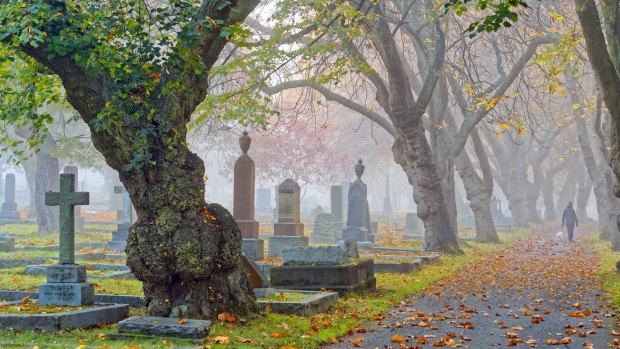This was published 1 year ago
Cemetery tourism: A traveller's guide to exploring graveyards beyond the famous dead

In only seeking out the tombs of famous dead folk, you'll miss out on so much more.Credit: iStock
The recently bereaved won't want to wander about a cemetery but, for everyone else, this is your opportunity to get cultural insight from another angle, freed from gilded palaces and art museums hung with canvases depicting saintly misfortunes.
There's bling and saints in cemeteries too but, in this different context, different emotions are invoked. A cemetery visit tells you something about the lives and deaths of ordinary people, their aspirations and religions. You can pass a happy or melancholy moment pondering the afterlife and human vanity.
Read the ultimate social media posts left on tombstones: they're a final attempt to pretend that we matter. Those who think some people matter more than others can seek out the tombs of famous dead folk, but in doing so you'll miss out on more.
Evita's mausoleum is of passing interest in Buenos Aires' Recoleta Cemetery but, if you linger, you'll enjoy slinking cats and wedding-cake tombs. In Pere-Lachaise in Paris you can visit Jim Morrison, Edith Piaf and Oscar Wilde, but the cemetery's far corners are a glorious abandon of long grass and lopsided tombstones of wonderful French elegance.
Cemeteries provide insight into decorative trends. Take time to admire plump stubby-winged cherubs, flickering lanterns and compassionate smiling Buddhas, the horror-movie chic of gargoyles and weeping angels. Enjoy improbable surprises like the dwarfs and wrestling nudes in Vienna's Zentralfriedhof and Egyptian obelisks in London's Highgate Cemetery. Cemeteries trace architectural movements too, from Greek Revival to art nouveau and modernism.
Some cemeteries are devoid of decoration, like the war graves of northern France and Belgium, where green fields stapled with white headstones turn the chaos and brutality of war into serene order. The only way to visit is in stunned silence. The war machine is beyond understanding.
Many cemeteries aren't dead places. Joggers pound through Green-Wood in New York, which has wonderful Manhattan views. Locals conduct voodoo rites and read tarot cards in New Orleans' cemeteries, dry laundry between mausoleum-strung lines in Kolkata's colonial Park Street Cemetery, and picnic to marimba music in Oaxaca in Mexico. In Assistens Kirkegard in Copenhagen, students sunbathe on the lawns.
Cemeteries aren't glum places of perpetual mourning. Think of them as places of unexpected pleasures. The best cemeteries remind us of wonderful, anonymous humanity. As stockman James Darcy's 1910 headstone in Kununurra notes: The troubles of life are many, the pleasures of life are few. Enjoy the pleasures while you can, even in the most ominous of places.
Sign up for the Traveller newsletter
The latest travel news, tips and inspiration delivered to your inbox. Sign up now.